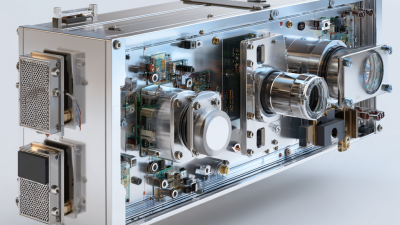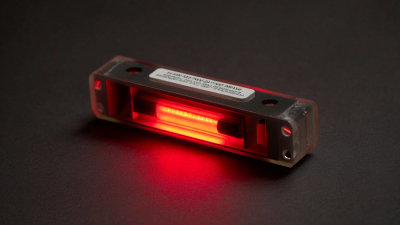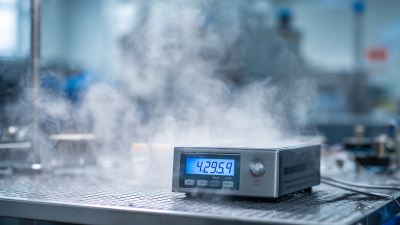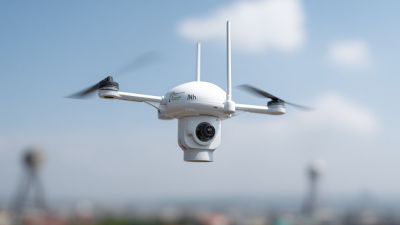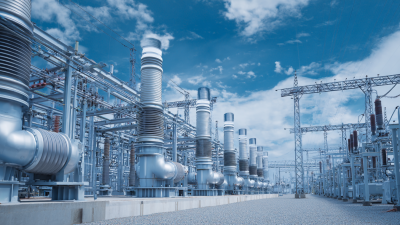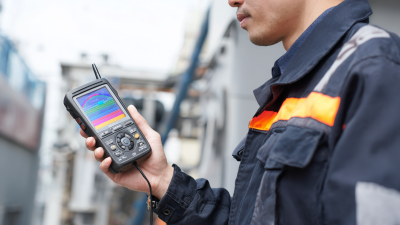
-
Home
-
Product Center
-
Application
-
Support
-
JT Cloud
-
About Us
-
Contact Us
Leave Your Message

In the realm of scientific research and industrial processes, precision is paramount. The accuracy of experiments and the reliability of data are fundamentally influenced by the environmental conditions under which they are conducted. This is where Temperature and Humidity Calibration Equipment comes into play, serving as a critical component in ensuring that laboratories maintain optimal conditions for their work. As advancements in technology continue to shape the landscape of research and industry, it becomes essential for laboratories to invest in high-quality calibration equipment that meets stringent standards and facilitates accurate measurements.

The calibration of temperature and humidity instruments is not merely a procedural requirement but a fundamental necessity that underpins the integrity of scientific results. Fluctuations in temperature and humidity can lead to significant variances in experiments, impacting outcomes and potentially skewing data. By utilizing reliable Temperature and Humidity Calibration Equipment, laboratories can establish a controlled environment that fosters reproducibility and dependability in their findings.
In this guide, we will explore the various types of calibration equipment available, the importance of regular calibration practices, and the best methodologies for integrating these tools into laboratory protocols. Whether you are a seasoned researcher or a professional seeking to optimize your lab's efficiency, understanding the essentials of temperature and humidity calibration is indispensable for enhancing precision and achieving accurate results.
When selecting temperature calibration equipment for laboratories, several key considerations must be prioritized to ensure precision and reliability. First, the accuracy and range of the equipment are paramount. Laboratories often require equipment that can operate within a specific temperature range while maintaining a high degree of accuracy. It is crucial to evaluate the specifications provided by manufacturers to ensure that the equipment meets the lab's unique requirements.
Another important factor is the calibration certificates and compliance with industry standards. Equipment that comes with traceable calibration certificates indicates a commitment to quality and reliability. Additionally, ensuring that the equipment complies with relevant industry standards, such as ISO or ASTM, can significantly enhance confidence in the calibration process. Regular maintenance and recalibration should also be factored in, as these activities are essential to uphold consistent performance over time, thus supporting laboratory operations effectively.
| Calibration Equipment Type | Accuracy (°C) | Calibration Range (°C) | Humidity Range (% RH) | Application Area |
|---|---|---|---|---|
| Digital Thermometer | ±0.1 | -50 to 150 | N/A | Laboratories, Industrial |
| Hygrometer | ±3 | N/A | 0 to 100 | Environmental Monitoring |
| Temperature Calibrator | ±0.05 | -40 to 120 | N/A | Calibration Labs |
| Data Logger | ±0.1 | -200 to 1250 | 0 to 100 | Industrial, Pharmaceutical |
| Thermal Imaging Camera | ±2 | -20 to 500 | N/A | Electrical, Mechanical |
Humidity calibration is a critical aspect of maintaining accurate measurements in laboratory settings. The importance of precise humidity levels cannot be overstated, particularly in processes that rely on environmental conditions. Recent advancements in calibration techniques, including low-cost sensor networks and the meticulous calibration of particulate matter sensors, highlight the growing need for reliable humidity measurements. Industry reports indicate that precise humidity control can significantly impact the quality and reliability of experimental results, especially in sensitive applications like agricultural research in dry regions.
Tips: When calibrating humidity sensors, consider using the latest calibration methods, such as using an iodide adduct mass spectrometer for more accurate measurements. Additionally, ensure that your sensors are regularly checked against standardized references to maintain measurement integrity. Implementing a robust calibration schedule can help mitigate deviations that may arise from environmental changes.
Moreover, the exploration of practical approaches for correcting relative humidity in low-cost sensors is essential for enhancing measurement accuracy. Such techniques can lead to better performance in urban air quality monitoring, as indicated by recent studies on the effectiveness of IoT-enabled devices. Monitoring humidity levels accurately allows labs to optimize their operations and achieve compliance with ISO/IEC 17025 standards, focusing on measurement uncertainty evaluations.
When selecting lab thermometers, precision and accuracy are paramount. A high-quality thermometer should be capable of providing precise readings within a specified temperature range, ideally with an accuracy of ±0.1°C. This level of precision ensures that experiments yield reliable data, which is essential in any scientific setting. Additionally, look for models that offer digital displays, as they provide clear and easy-to-read results, minimizing the risk of human error.
Another crucial feature to consider is the response time of the thermometer. Instruments that can quickly adjust to temperature changes allow for more efficient workflows in the lab. Additionally, the durability of the thermometer is vital, especially in busy lab environments where equipment may be subject to accidental bumps or spills. Models made with robust materials and designed to withstand a certain degree of impact while still maintaining calibration integrity are highly recommended. Features such as waterproof casing or the ability to function in varying humidity levels can also enhance a thermometer's usability.
When assessing the performance of humidity measurement devices, accuracy and reliability are paramount. Laboratories rely heavily on precise humidity measurements to ensure *optimal conditions* for experiments, production processes, and storage. To evaluate these devices, one must consider key factors such as calibration, response time, and environmental conditions during testing. Regular calibration with traceable standards is crucial, as it ensures that the measurement devices maintain their accuracy over time and across varying environmental situations.
In addition to calibration, the response time of a humidity measurement device plays a significant role in its overall performance. Devices with faster response times can provide real-time readings, which are essential in dynamic laboratory environments where conditions can change rapidly. Furthermore, understanding the operational limits of each device, such as the range of humidity levels it can accurately measure, allows laboratories to choose the right equipment for their specific needs. Evaluating these performance metrics is essential for maintaining the integrity of laboratory processes and ensuring that results are reliable and reproducible.
Proper maintenance of temperature and humidity calibration tools is vital for ensuring accurate measurements and reliable data in laboratory settings. Regular checks and calibrations are necessary to adhere to industry standards, as even minor deviations can lead to significant errors in research outcomes.
**Tips: Always store calibration equipment in a stable environment, away from direct sunlight and extreme temperatures, to prolong its lifespan and maintain accuracy. Clean the equipment regularly with appropriate solutions, as contamination can affect performance.**
Frequent calibration and maintenance not only enhance accuracy but also increase the longevity of the tools. Create a scheduled maintenance plan that includes routine checks and recalibration, ensuring that the devices are functioning optimally. Additionally, educate the staff on proper handling techniques to minimize wear and tear during daily use.
**Tips: Consider labeling maintenance schedules on equipment for easy tracking and transparency. When purchasing new calibration tools, always look for those with built-in maintenance alerts to help streamline the process.**
